Late Cenozoic Ice Age
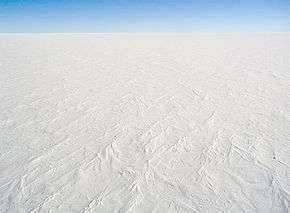
| Geologic Time Scale divisions within the Late Cenozoic Ice Age | |
| Epoch | Age |
| Oligocene Epoch 33.9 to 23.03 million years ago 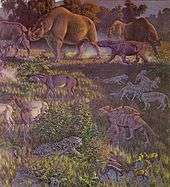 |
Rupelian Age 33.9 to 28.1 million years ago Chattian Age 28.1 to 23.03 million years ago |
| Miocene Epoch 23.03 to 5.333 million years ago 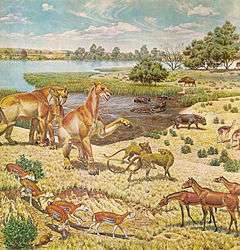 |
Aquitanian Age 23.03 to 20.44 million years ago Burdigalian Age 20.44 to 15.97 million years ago Langhian Age 15.97 to 13.82 million years ago Serravallian Age 13.82 to 11.63 million years ago Tortonian Age 11.63 to 7.246 million years ago Messinian Age 7.246 to 5.333 million years ago |
| Pliocene Epoch 5.333 to 2.58 million years ago 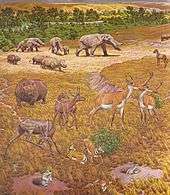 |
Zanclean Age 5.333 to 3.6 million years ago Piacenzian Age 3.6 to 2.58 million years ago |
| Pleistocene Epoch 2.58 million to 11,700 years ago 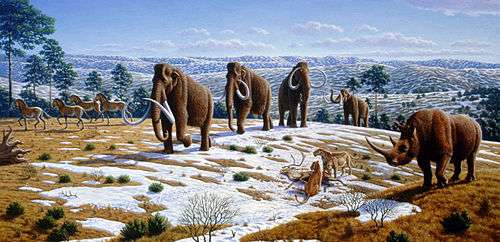 |
Gelasian Age 2.58 to 1.8 million years ago Calabrian Age 1.8 million to 781,000 years ago Middle Pleistocene Age 781,000 to 126,000 years ago Late Pleistocene Age 126,000 to 11,700 years ago |
| Holoocene Epoch 11,700 years ago to present 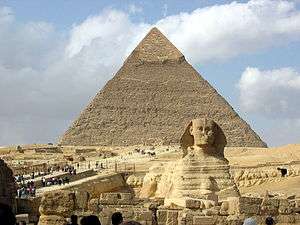 |
Greenlandian Age 11,700 to 8,200 years ago Northgrippian Age 8,200 to 4,200 years ago Meghalayan Age 4,200 years ago to present, |
The Late Cenozoic Ice Age[1][2], Holarctic-Antarctic Ice Age[2] or Antarctic Glaciation[3][4] began 33.9 million years ago at the Eocene-Oligocene Boundary and is ongoing[1]. It is Earth's current ice age or icehouse period. Its beginning is marked by the formation of the Antarctic ice sheets.[5] Six million years later, the East Antarctic Ice Sheet had formed and 14 million yeas ago it had reached its current extent. It has persisted to the current time.[6]. In the last three million years, glaciations have spread to the northern hemisphere. It commenced with Greenland becoming increasingly covered by an ice sheet in late Pliocene (2.9-2.58 Ma ago)[7]During the Pleistocene (starting 2.58 Ma ago), the Quaternary glaciation developed with decreasing mean temperatures and increasing amplitudes between glacials and interglacials. During the glacial periods of the Quaternary, large areas of northern North America and northern Eurasia have been covered by ice sheets.
Throughout the Phanerozoic Eon (everything after the Precambrian), the Earth has altered between two phases, hothouse Earth and icehouse Earth. During the hothouse Earth phase, the Earth has no polar ice caps, and is virtually ice free.

History of Discovery and Naming
Schimper coined the term Eiszeit meaning ice age in 1837. For a long time, the term only referred to glacial periods. At some point, the concept that they were all part of a much longer ice age came later. But it is uncertain when exactly that happened.
There was a newspaper article from 1966 October 20 from The Stanford Daily, a newspaper from Stanford, California, United States of America. The article was titled Man's Relation To Nature Topic Of Eiseley's Lecture. It uses the term "current ice age". It also says, "The human race has survived but a bit of 30 million years of an ice age." Although the term Late Cenozoic Ice Age isn't used, it appears to be referring to the same time period.
It is uncertain when the term Late Cenozoic Ice Age was first used. But it dates back to at least 1973.[8]
Many early geophysicists lived in and studied landscapes of the Northern Hemisphere shaped by glacial processes of the last 1-2 million years. The name Quaternary became closely associated with these glaciations (more recently often the Pleistocene Ice Age). In contrast, the Antarctic ice sheet seemed more like a permanent feature, and it became apparent only later that its existence during the last 30 million years is not the typical situation of the geologic past. No single name for this extended ice age has yet emerged, if named at all, and some authors extend the use of the term Quaternary Glaciation beyond the Quaternary Period.[9][10]
The Climate before the Polar Ice Caps

The last hothouse period began 260 million years ago during the late Permian Period at the end of the Karoo Ice Age. It lasted all through the time of the non-avian dinosaurs during the Mesozoic Era, and ended 33.9 million years ago in the middle of the Cenozoic Era (the current Era). This hothouse period lasted 226.1 million years.
The hottest part of the last hothouse earth was the Paleocene-Eocene Thermal Maximum, 55.5 million years ago. Average global temperatures were around 30 °C (86 °F),[11] which is about 15 °C (27 °F) warmer than present. This was only the second time that Earth reached this level of warmth since the Precambrian. The other time was during the Cambrian Period, which ran from 541 million years ago to 485.4 million years ago.
During the early Eocene, Australia[12] and South America[13] were connected to Antarctica.
53 million years ago during the Eocene Epoch, summer high temperatures in Antarctica were around 25 °C (77 °F)[12]. Temperatures during winter were around 10 °C (50 °F)[12]. It did not frost during the winter[12]. The climate was so warm that trees grew in Antarctica[12]. Arecaceae (palm trees) grew on the coastal lowlands, and Fagus (beech trees) and Pinophyta (conifers) grew on the hills just inland from the coast.[12]
Temperatures soon began to decrease as the methane levels in the atmosphere started to decline[1].
As the global climate became cooler, the planet was seeing a decrease in forests, and an increase in savannas[11]. Animals were evolving to have a larger body size[11].
Glaciation of the Southern Hemisphere
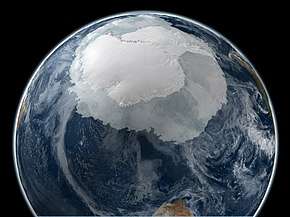
As Australia and South America drifted away from Antarctica, deep ocean waters completely surrounded Antarctica[6]. This caused the formation Antarctic Circumpolar Current.[6] This current still exists today, and is a major reason for why Antarctica has an exceptionally cold climate.[12]
At the Eocene-Oligocene Boundary 33.9 million years ago, glaciers became widespread in Antarctica.[1] The Eocene-Oligocene Boundary was the transition from the last hothouse period to the present icehouse climate.[14][6] This was the beginning of the Late Cenozoic Ice Age.
At 29.2 million years ago, there were three ice caps in the high elevations of Antarctica[6]. One ice cap formed in the Dronning Maud Land[6]. Another ice cap formed in the Gamburtsev Mountain Range[6]. Another ice cap formed in the Transantarctic Mountains.[6] At this point, the ice caps weren't very big yet[6]. Most of Antarctica wasn't covered by ice.[6]
By 28.7 million years ago, atmospheric CO2 levels had dropped below three times the pre-industrial levels (840 ppm)[6]. The Gamburtsev ice cap wass now much larger due to the colder climate.[6]
CO2 continued to fall and the climate continued to get colder[6]. At 28.1 million years ago, the Gamburtsev and Transantarctic ice caps merged together into a main central ice cap[6]. At this point, ice was now covering a majority of the continent.[6]
27.9 million years ago, the Dronning Maud ice cap merged with the main ice cap[6]. This was the formation of the East Antarctic Ice Sheet.[6]
Global refrigeration set in 22 million years ago.[5]
By 14 million years ago, the Antarctic ice sheets were similar in size and volume to present times[1]. Glaciers were starting to form in the mountains of the Northern Hemisphere.[1]
The Mediterranean Sea was dry between 6 and 5 million years ago.[1]
Between 3.6 and 3.4 million years ago, the was a sudden but brief warming period.[1]
Glaciation of the Northern Hemisphere
.jpg)
2.58 million years ago, continental ice sheets began to form in the Northern Hemisphere[1]. This was the beginning of the Quaternary Ice Age, the current phase of the Late Cenozoic Ice Age. Throughout the Quaternary, there have been glacial periods (cold periods with extended glaciation) and interglacial periods (warm periods with less glaciation).
The oscillation between glacial and interglacial periods is due to the Milankovitch cycles. These are cycles that have to do with Earth's obliquity and eccentricity.
Obliquity
Obliquity is Earth's axial tilt. Earth is currently tilted at 23.5 degrees. Over a 41,000 year cycle, the tilt oscillates between 22.1 and 24.5 degrees.[15] When the tilt is greater (high obliquity), the seasons are more extreme. During times when the tilt is less (low obliquity), the seasons are less extreme. Less tilt also means that the polar regions receive less light from the sun. This causes a colder global climate as ice sheets start to build up.[15]
Orbital Eccentricity or Elongation
The shape of Earth's orbit around the sun affects the Earth's climate. Over a 100,000 year cycle, Earth oscillates between having a circular orbit to having a more elliptical orbit.[15]
Earlier in the Quaternary, obliquity was the main cause of climate oscillation.[15] In the last 850,000 ± 50,000 years, orbital eccentricity has been the main driver of climate oscillation.[15]
Last Glacial Period
The last glacial period began 115,000 years ago and ended 11,700 years ago. The most intense part, the last glacial maximum ran from 26,500 years ago to 20,000 years ago. During the last glacial maximum, average global temperatures were around 5.5 ± 1.5 °C (9.9 ± 2.7 °F) colder than present times (as of the 1800s).[16] According to Berkeley Earth's list of average global temperatures by year, the average global temperature for the 1850-1899 period was 13.8 °C (56.9°F).[17] So during the last glacial maximum, average global temperatures were around 8.3 ± 1.5 °C (47.0 ± 2.7 °F). Year-round ice covered about 8% of Earth's surface and 25% of the land area[18] Sea level was about 125 meters (410 feet) lower than in present times (2012).[18]
Current Interglacial Period
The Earth is currently in an interglacial period called the Holocene, which began 11,700 years ago. Being in an interglacial, there is less ice than there was during the last glacial period. However, the last glacial period was just one part of the ice age that still continues today. Even though Earth is in an interglacial, there is still more ice than times outside of ice ages. Outside of ice ages (a.k.a. hothouse periods), the planet is virtually ice-free.
There are also currently ice sheets in the Northern Hemisphere, which means that there is more ice on Earth than there was during the first 31.3 million years of the Late Cenozoic Ice Age. During that time, only the Antarctic ice sheets existed.
The average global temperature for the 1850-1899 period was 13.8 °C (56.9°F). Because greenhouse gases have increased rapidly since the 1800s, the average global temperature was 15.0 °C (58.9 °F) for the 2013-2017 period[17]. Currently (as of 2012), about 3.1% of Earth's surface and 10.7% of the land area is covered in year-round ice[18]. The current sea level (as of 2009) is 70 meters (230 feet) lower than it would be without the ice sheets of Antarctica and Greenland.[14]
Climate Change from Human Activity
According to Berkeley Earth's list of average global temperatures by year, the average global temperature for the 1980-1999 period was 14.6 °F (58.3°F)[17]. According to the Intergovernmental Panel On Climate Change, average global temperatures by the 2090s decade are expected to be 1.8 °C (3.2 °F) higher for a low scenario, and 4.0 °C (7.2 °F) higher for a high scenario above the 1980-1999 average. This means that global average temperatures would be around 16.4 °C (61.5 °F) for a low scenario. This would be similar to the climate of five million years ago during the Zanclean Age of the Pliocene Epoch.[19] For the high scenario, global temperatures would be about 18.6 °C (65.5 °F). This would be similar to the climate of 13 million years ago during the Serravallian Age of the Miocene Epoch.[19] Both of these times were before the Quaternary Ice Age (glaciation of the northern hemisphere), but still within the longer Late Cenozoic Ice Age. Only the Antarctic ice sheets existed during these times, not the arctic ice sheets.
There are differing scientific estimates on the exact temperatures of past climates. The Eemian interglacial period was the last interglacial period prior to the current Holocene interglacial. It ran from 130,000 years ago to 115,000 years ago. It was followed by the last glacial period. Some estimates say that the warmest parts of the Eemian weren't much warmer than now[20], while others estimate it to have been as much as 3-5 °C (5.4 to 9.0 °F) warmer than present[21]. If the warmer estimates are accurate, then the climate of 2100 will only be the warmest in 115,000 to 130,000 years.
See also
- Beringia, the land that connected Eurasia and North America during the last glacial period
- Cat gap, a gap in the North American fossil record 25 to 18.5 million years ago
- Holocene climatic optimum, a warm period with temperatures similar to the present, 9,000 to 5,000 years ago
- Mammoth
- Marine isotope stage, the names of past climate periods
- Mastodon
- Neanderthal
- Proailurus, an early cat or cat-like animal that lived 25 million years ago
- Saber-toothed cat
- Weichselian glaciation, the glaciation of Scandinavia and northern Europe during the last glacial period
- Wisconsin glaciation, the glaciation of North America during the last glacial period
- Würm glaciation, the glaciation of the Alps during the last glacial period
- Younger Dryas, a return to colder glacial conditions millennia after the last glacial maximum, 12,900 to 11,700 years ago
References
- 1 2 3 4 5 6 7 8 9 University of Houston-Clear Lake - Disasters Class Notes - Chapter 12: Climate Change sce.uhcl.edu/Pitts/disastersclassnotes/chapter_12_Climate_Change.doc
- 1 2 Emporia State University - ES 331/767 Exercise III Glaciations Throughout Earth's History http://academic.emporia.edu/aberjame/ice/labs/lab03.htm
- ↑ Kvasov, D.D.; Verbitsky, M.Ya. (2017). "Causes of Antarctic Glaciation in the Cenozoic". Quaternary Research. 15: 1–17. doi:10.1016/0033-5894(81)90110-1.
- ↑ Goldner, A.; Herold, N.; Huber, M. (2014). "Antarctic glaciation caused ocean circulation changes at the Eocene–Oligocene transition". Nature. 511 (7511): 574–577. doi:10.1038/nature13597. PMID 25079555.
- 1 2 Studies in Geophysics - Climate in Earth's History - Chapter 8, Page 80 http://www.nap.edu/read/11798/chapter/8#80
- 1 2 3 4 5 6 7 8 9 10 11 12 13 14 15 16 17 Deconto, Robert M.; Pollard, David (2003). "Rapid Cenozoic glaciation of Antarctica induced by declining atmospheric CO2". Nature. 421 (6920): 245–249. doi:10.1038/nature01290. PMID 12529638.
- ↑ Bartoli, G; Sarnthein, M; Weinelt, M; Erlenkeuser, H; Garbe-Schönberg, D; Lea, D.W (2005). "Final closure of Panama and the onset of northern hemisphere glaciation". Earth and Planetary Science Letters. 237 (1–2): 33–44. doi:10.1016/j.epsl.2005.06.020.
- ↑ Hughes, T. (1973). "Is the west Antarctic Ice Sheet disintegrating?". Journal of Geophysical Research. 78 (33): 7884–7910. doi:10.1029/JC078i033p07884.
- ↑ Edward J. Tarbuck and Frederick K. Lutgens, The earth, An introduction to Physical Geology, ISBN 0-675-20698-7, page 289
- ↑ Stephen Marshak, part, Portrait of a Planet, ISBN 978-0-393-93750-3, page 832
- 1 2 3 University of California - Museum of Paleontology - The Eocene Epoch http://www.ucmp.berkeley.edu/tertiary/eocene.php
- 1 2 3 4 5 6 7 Smithsonian Magazine - Ancient Climate Change Meant Antarctica Was Once Covered with Palm Trees http://www.smithsonianmag.com/smart-news/ancient-climate-change-meant-antarctica-was-once-covered-with-palm-trees-12098835/
- ↑ Houle, Alain (1999). "The origin of platyrrhines: An evaluation of the Antarctic scenario and the floating island model". American Journal of Physical Anthropology. 109 (4): 541–559. doi:10.1002/(SICI)1096-8644(199908)109:4<541::AID-AJPA9>3.0.CO;2-N.
- 1 2 Liu, Z.; Pagani, M.; Zinniker, D.; Deconto, R.; Huber, M.; Brinkhuis, H.; Shah, S. R.; Leckie, R. M.; Pearson, A. (2009). "Global Cooling During the Eocene-Oligocene Climate Transition". Science. 323 (5918): 1187–1190. doi:10.1126/science.1166368. PMID 19251622. Lay summary – University of Massachusetts (February 26, 2009).
- 1 2 3 4 5 PBS Digital Studios - Space Time - Is An Ice Age Coming? http://www.youtube.com/watch?v=ztninkgZ0ws
- ↑ Intergovernmental Panel On Climate Change - Climate Change 2007: Working Group I: The Physical Science Basis - Executive Summary https://www.ipcc.ch/publications_and_data/ar4/wg1/en/ch6s6-es.html
- 1 2 3 Berkeley Earth - Land and Ocean Summary http://berkeleyearth.lbl.gov/auto/Global/Land_and_Ocean_summary.txt
- 1 2 3 USGS - Glacier and Landscape Change in Response to Changing Climate - Glaciers and Sea Level https://www2.usgs.gov/climate_landuse/glaciers/glaciers_sea_level.asp
- 1 2 Academia.edu - Uplifted Arctic Continental Margins and Climate Shift http://www.academia.edu/20076946/Uplifted_Arctic_Continental_Margins_and_Climate_Shift%5Bself-published+source?%5D
- ↑ NOAA - Penultimate Interglacial Period – About 125,000 Years Ago http://www.ncdc.noaa.gov/global-warming/penultimate-interglacial-period
- ↑ GlobalChange.gov - Understanding Future Climate by Looking Back in Time http://www.globalchange.gov/about/highlights/2014-understanding-future-climate-by-looking-back-in-time